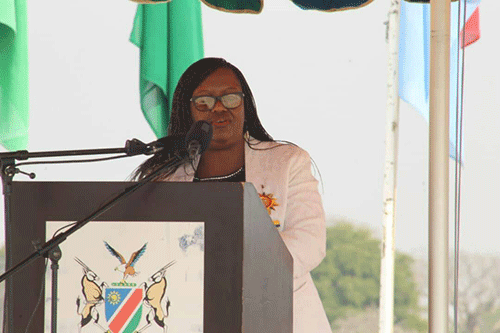NKURENKURU – Kavango West governor Sirkka Ausiku said the region remains extremely rural and attributed the status quo to a lack of local authorities. At the moment, it has one local authority, Nkurenkuru.
She said this during her recent state of the region address.
More local authorities will bring growth to the region as businesses will set up shop as well as ministries to render services to inhabitants of the emerging local authority.
This will create employment and better education opportunities, better healthcare as State and private clinics are most likely to set up shop there as well as other services where inhabitants can get assistance at different levels, which will improve the lives of people.
“To address this, the Kavango West Regional Council conducted feasibility studies at its identified growth points,’’ she noted.
Amongst the identified growth points are Mpungu, Bunya, Katjinakatji and Ncamagoro village.
According to the governor, a submission was made to the Ministry of Urban and Rural Development to proclaim these settlements by 2023, while Kahenge, Rupara and Katwitwi settlements are to be proclaimed as village councils by 2024.
“I am, therefore, appealing to all constituency councillors to initiate affordable housing projects at all our identified growth point areas, including Katwitwi settlement with the collaboration of the Shack Dwellers Federation and the Build Together Programme.
“I want to appreciate those constituencies that have started with the programmes, namely Musese constituency at Rupara village, while Katjinakatji and Mururani in Mankumpi constituency are in the pipeline. Hence, the region would like to thank Camoposatu Investments for the financial support to the Mankumpi constituency Shack Dwellers Federation,’’ she stated.
The state of the region address was held under the theme “Kavango West Going Green”.
The theme will remain the same for the next three years.
“As reported last year, the region has identified agriculture, manufacturing and tourism as our strategic sectors for regional development and with good investment, these sectors will bring impactful changes to the livelihoods of our communities, address poverty and create needed employment in the region and beyond,’’ she noted.
The governor stated that the region is indeed happy that agriculture is identified as one of the priority sectors in the Harambee Prosperity Plan II.
Under agriculture and land reform, the governor reported that the agriculture ministry implemented several programmes in the region, and she reiterated that, agriculture is the future of the region and a catalyst for employment creation, and it will help address poverty if programmes are well implemented.
“The region appreciates the implementation of various programmes by the line ministry, namely the Dry Land Crop Production Programme (DCPP) and the National Horticulture Support Programme. I am happy to report that the region has a total of 46 registered seed growers and would like to increase the group to 100. At the same time, the region is appealing to the ministry to speed up the establishment of the Seed Processing Plant at Katwitwi settlement,’’ she noted.
Further, the governor welcomed the announcement by the ministry of agriculture that they intend to expand the AMTA Katwitwi milling plant, as this, according to her, will enable the farmers to have a greater market to sell their products.
In pursuit of poverty alleviation, the governor addressed that the region has also identified tourism as one sector with the potential to help address poverty and create needed employment and requested the line ministry to introduce community-based tourism in all six community forests.
“Further, the problem of human and wildlife conflict continues in our region and I’m still appealing to the line ministry to consider our recommendations submitted in 2020, regarding human-wildlife conflict,’’ she said.


